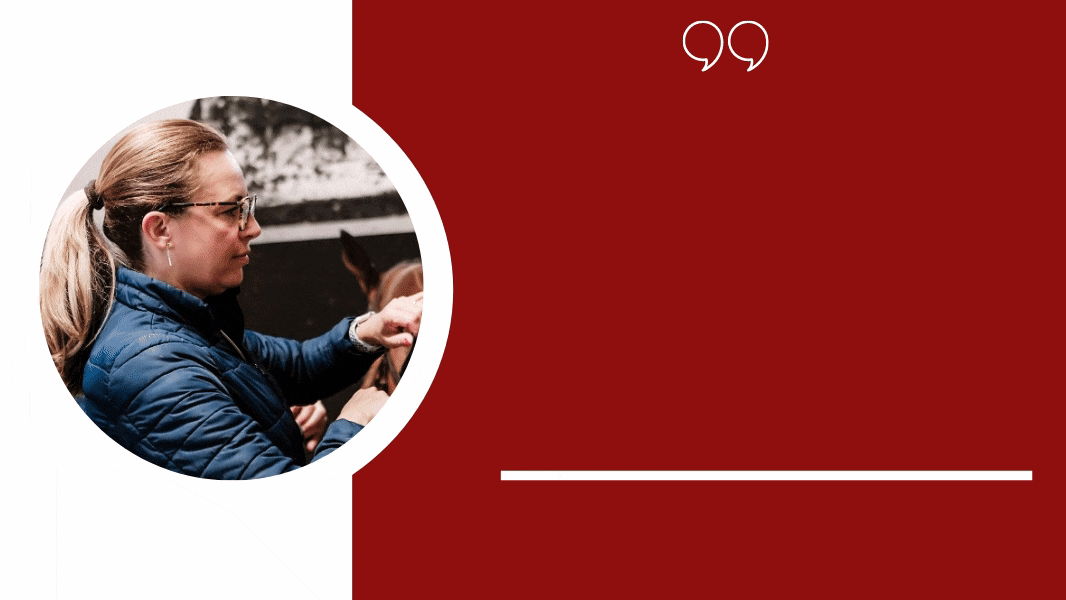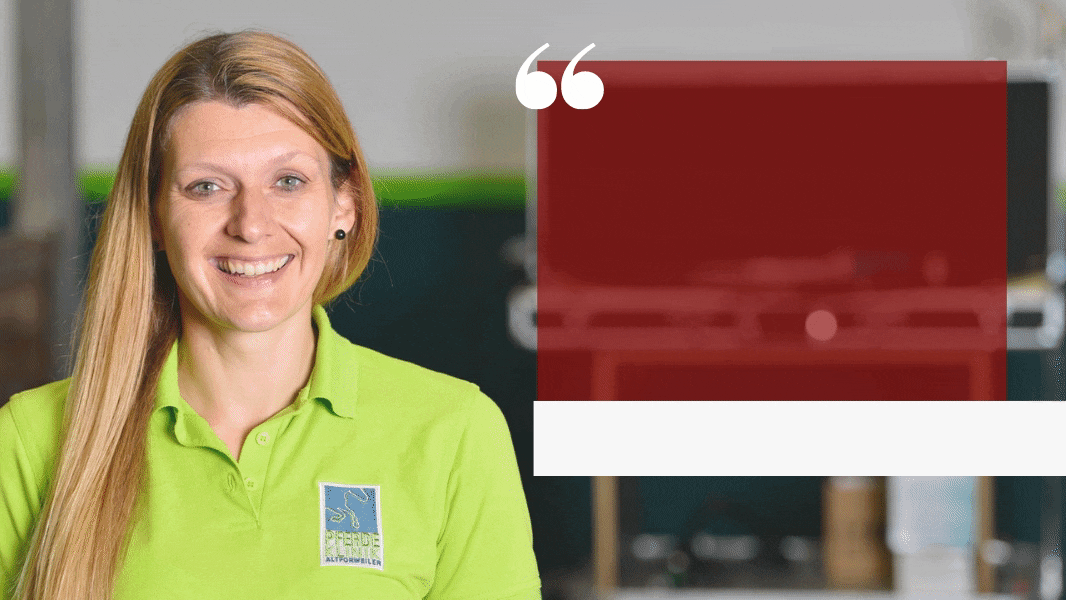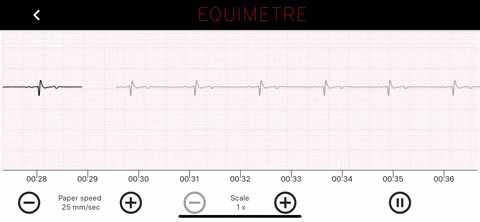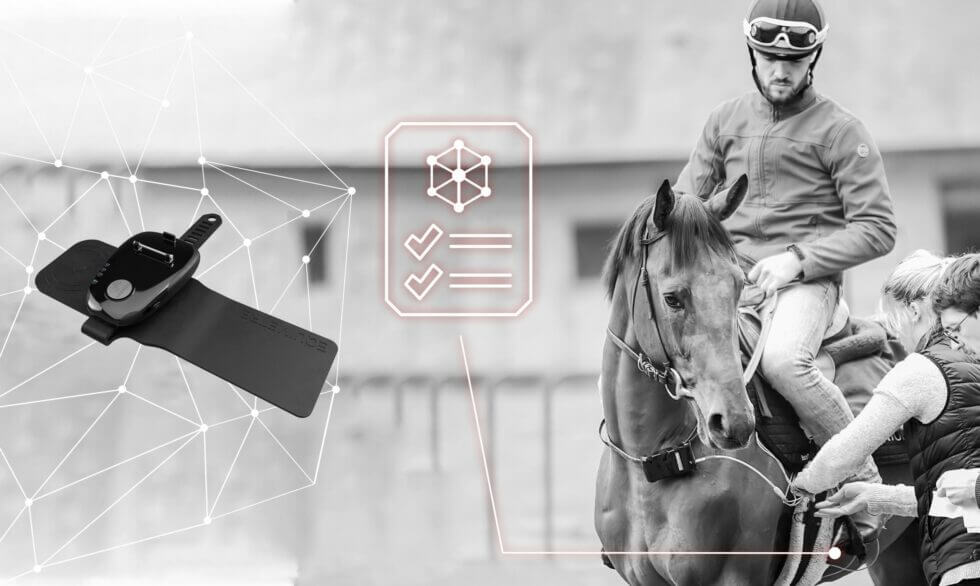At Arioneo, we are focusing the development of our products on reliability and scientific validation. Our goal is to offer the most accurate products to our customers. After more than a year of work, we are proud to bring a scientifically validated tool with medical precision to our veterinary customers.
A study assessing the accuracy of the heart rate measurement and heart rate variability by Equimetre has been published. It compared EQUIMETRE with Televet, which is considered as the Gold Standard in terms of electrocardiogram (ECG) measurement in horses. This study provides scientific validation of the reliability of the heart rate measurement carried out by the EQUIMETRE sensor. The comparison with the Gold Standard is an important step because it allows to compare the data measured by Equimetre with the ones of a tool established as a reference in the cardiac study of athletic horses.
At the end of the study, it can be stated that the Equimetre sensor is scientifically validated for monitoring heart rate and heart rate variability in racehorses during high-intensity effort.
Abstract of the study carried out by F. ter Woort, G. Dubois, M. Didier and E. Van Erck-Westergren, published in Comparative Exercise Physiology.
“The adoption of fitness tracker devices to monitor training in the equine market is in full expansion. However, the validity of most of these devices has not been assessed. The aim of this study was to examine the validity of heart rate (HR) and heart rate variability (HRV) measurements during high-intensity exercise by an integrated equine fitness tracker with an electrocardiogram (ECG) (Equimetre) in comparison to an ECG device (Televet). Twenty Thoroughbred racehorses were equipped with the two devices and completed a training session at the track. Data from 18 horses was readable to be analysed. Equimetre HR was compared to Televet HR derived from the corrected Televet ECG. HRV parameters were computed in a dedicated software (Kubios) on uncorrected and manually corrected ECG from both devices, and compared to the Televet corrected data. The HR was recorded on the entire training session and HRV parameters were calculated during the exercise and recovery periods. A strong correlation between the Equimetre HR and Televet HR on corrected data was found (Pearson correlation: r=0.992, P<0.001; root mean square error = 4.06 bpm). For HRV, the correlation was good for all parameters when comparing corrected Equimetre to corrected Televet data (Lin’s coefficient = 0.998). When comparing data obtained from uncorrected Equimetre data to the corrected Televet data, the correlation for HR was still good (Lin’s coefficient = 0.995) but the correlation for all HRV parameters was poor, except for the triangular index (Lin’s coefficient = 0.995). However, correlation between the uncorrected Televet HRV data and the corrected Televet data was equally poor (Lin’s coefficient <0.9). In conclusion, the integrated equine fitness tracker Equimetre satisfies validity criteria for HR monitoring in horses during high intensity exercise. When using corrected ECG data, it provides accurate HRV parameters as well.”
Why choose EQUIMETRE?
1. A tool of medical accuracy, scientifically validated
The ECG and heart rate measured by Equimetre provides the veterinarian with medical precision. Scientifically validated, the sensor automatically collects all the ECGs from the training sessions it monitors and an app allows to consult the ECG live via BLE. Then, Equimetre’s veterinary clients have the possibility to analyse the ECG on Kubios, a cutting-edge and very complete cardiological analysis software.
2. Benefit from a 360° tool : GPS (speed, distance, altimetry), Cardio (HR, ECG, Recovery, HRV), Locomotion (stride length, stride frequency, symmetry, regularity)
Veterinarians are facing a major challenge: to have at their disposal innovative tools allowing them to work on a whole panel of data simultaneously in a single click. In order to reduce the use of independent tools, 360° solutions ease the daily life of veterinarians. For example, the analysis of ECG at full speed with speed and locomotor data enables a very precise analysis and a more refined diagnosis. In addition, data storage ensures regular and simplified remote monitoring. EQUIMETRE VET allows to collect the complete electrocardiogram (ECG) of a horse during his effort and to analyse it thanks to the most powerful software on the market: Kubios HRV®. Physical and sport parameters complete the analysis to give a clear overview of the horses’ fitness.

3. ECG at full speed, automatically collected at each training session
Analysing the ECG at full speed is the best way to detect cardiac pathologies such as arrhythmias. The Equimetre sensor is the only monitoring device with internationally patented electrodes allowing the collection and storage of the ECG of each horse monitored at each training session. You can then watch the ECG live during the training, or replay it after the training. Equimetre is the only product on the market that automatically measures the ECG of a horse at full speed with the same accuracy as at rest.


4. Opportunity of practicing telemedicine: longitudinal performance monitoring, convalescence, rehabilitation
By having access to the training data, the veterinarian can consult remotely and judge if it is necessary to go to the stable. Telemedicine also makes it easier to analyse poor performance and investigate cardiac pathologies. The accounts of our Equimetre platform include a specific feature developed specifically for veterinarians who wish to practice telemedicine. A system of linked mirror accounts allows a veterinarian to consult the horses of all his clients, who can access from their own account to the training of their horses. From their office, veterinarians can analyse longitudinal work and remotely respond to doubts from the trainer. They are also able to detect early signs of pain, or abnormal cardio and act as soon as possible.
The great advantage is that you can let trainers and riders train normally, even without the presence of a vet, and still have their ECG to analyse remotely.
Claudine Anen, a veterinarian
5. Prioritization of consultations and remote consultations
The regulation of consultations is one of the forms of telemedicine defined by the Order of Veterinarians. Its goal is to prioritize the requests of racehorse owners and trainers through remote consultation. This allows the veterinarian to prioritize the various incoming calls in order to select horses for whom the trip is urgent.
Obtaining information such as the heart rate during exercise or the stride length and stride frequency during exercise allows the veterinarian to establish an opinion on the approach to treat a horse. However, no diagnosis is established remotely, simply a prioritisation from which the veterinarian can save time.
6. Teleresearch & big data
Telemedicine offers infinite possibilities for equine research. Indeed, the numerous data collected ensure the development of a worldwide database increasing the possibilities for researchers. New connected sensors such as Equimetre promote data sharing and networking. Thus, the development of tele-research is facilitated.
Keywords: scientifically validated tool, scientific validation, medical accuracy, EQUIMETRE scientific study, ECG, telemedicine, data

